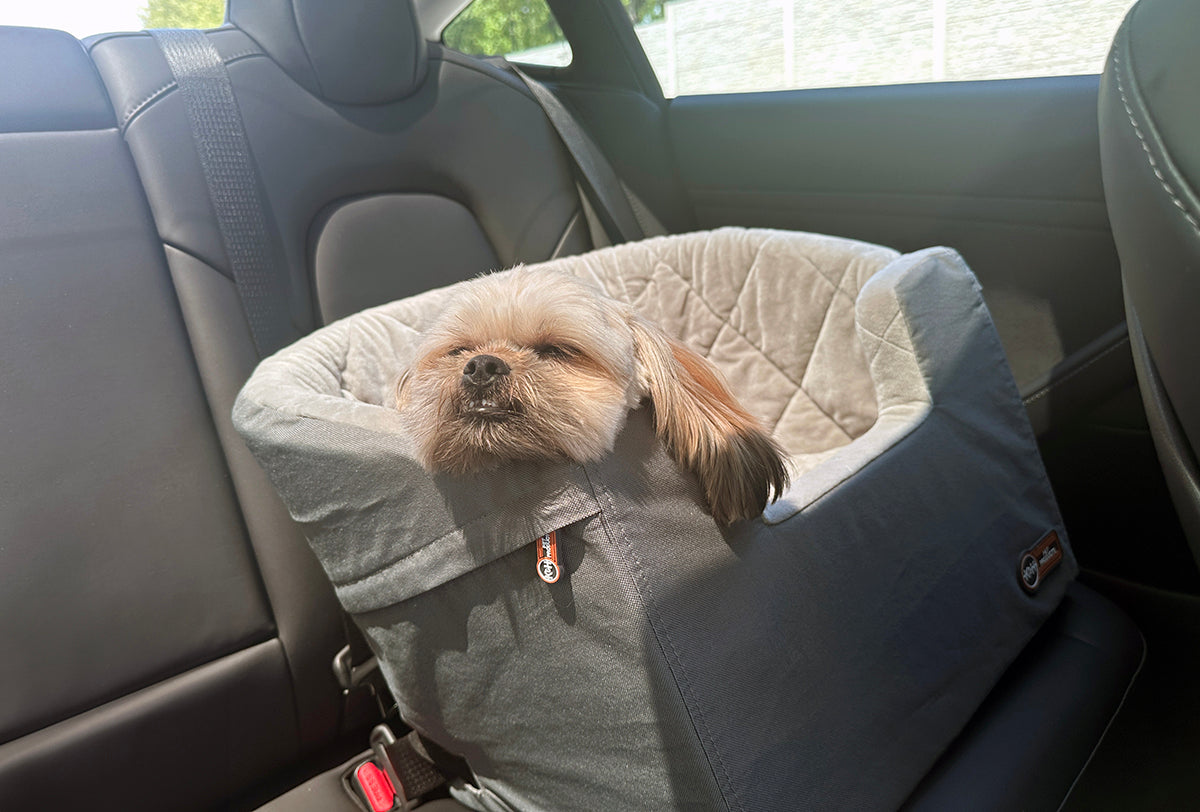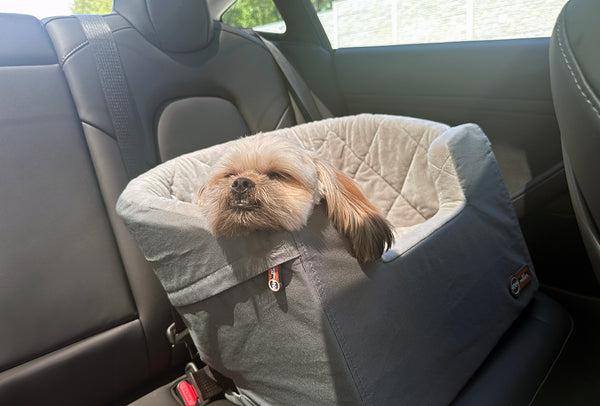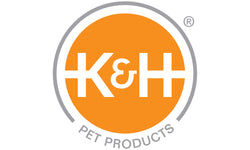
My Dog Gets Car Sick. What Should I Do?
Your dog loves to hike with you at a local park and visit canine friends for playdates. But there's an issue. The car ride to and from those adventures triggers doggy nausea and sickness. Ugh. You might be wondering, "Why does my dog get car sick? And how can I make him feel better?" Thankfully, you have several options to help your pup feel his best on car rides.

Why does my dog get car sick?
Your pup may experience nausea, vomiting, or diarrhea while riding in a car for many reasons. Dogs less than a year old have more imbalances in the inner ear, which can cause motion sickness. (This becomes less of a concern as the dog ages.)
Medical issues, such as inner ear infections, certain diseases, or balance issues, can also trigger car sickness in dogs.
Some dogs experience car sickness due to anxiety or nervousness. If your dog only goes on car rides to the vet for shots or medical procedures, they don't exactly associate car time with fun and likely get nervous — and then sick.
Symptoms of Car Sickness in Dogs
Since our furry companions can't talk, we have to pay close attention to their body language and vocalizations to understand when something is wrong. Your pup might feel the effects of car sickness if they:
- Become inactive (stop looking out the window, stop chewing a toy, etc.)
- Start yawning or whining more than usual
- Begin drooling excessively and/or licking their lips
- Have an accident (vomit or bowel movement)
You know your pet best. If his usual car manners shift unexpectedly, it's time to pause and consider helping your pet feel more relaxed in the car.
What should I do if my dog gets car sick?
Helping your pet get more comfortable with car rides makes it much easier on you and her, whether you're heading out on a pet-friendly ride or going to the vet for a check-up.
1. Practice car rides. Start with very short jaunts around the block for a few minutes. Then, go home so your pet understands she'll always return to her safe place. Slowly increase the distance and time of each outing to help your pet acclimate.
2. Make the car a fun location. Place a few toys or treats in the car to help prevent boredom. Ultimately, these positive distractions can take your pet's mind off the fact that she's in the car.
3. Place your dog in the middle of a rear seat. This encourages her to look forward rather than out a side window with scenery whizzing by, which may cause balance issues and nausea. Help keep your dog safe by using a dog car seat.
The K&H Travel Safety Carrier encloses pets up to 40 pounds, so they can't roam your car's cabin. The soft carrier stabilizes with a seatbelt and has mesh walls so your dog gets ample fresh air and can see out.
Another option is the K&H Bucket Booster Pet Seat. This car seat elevates your smaller pet on top of a thick cushion and secures him in place with tethers, which may make him feel less nervous in the car. This pet seat comes in heated or unheated options. The heated bed plugs into a USB port in the car to offer coziness on chilly days.
To keep your dog in one spot during the car ride, consider the K&H Bucket Booster Rectangle Pet Seat. This dog bed elevates the pup so he can better see out car windows. Attach the two adjustable security tethers to your dog's harness to keep him in place.

The K&H Buckle n' Go Pet Seat can also help restrain your pet to the middle seat. The mesh sidewalls allow the pet to see out if they lie down. This dog car seat works well with small, medium, and large dogs.
Do you have a toy breed or small dog? The K&H Portable Pet Console Booster Dog Car Seat works to contain your pet in the car, then doubles as a portable carrier to take your pet out of the car and into a building easily.

4. Open the car windows. A little fresh air when you're not feeling well can do wonders for you or your dog. If it's too cold outside, fully open the car's air vents closest to the pet to provide fresh, circulating air.
5. Reduce food before car rides. If your pet tends to vomit on car rides, skip her meal before the ride takes place. After you're back home, offer the missed food. Note: While it's OK to restrict food for short periods, never restrict your dog's access to fresh water.
After you've done everything to help your pet feel his best on car rides, make it easier on yourself if your pet does get sick in the car. If you have a large dog riding in the rear cargo area of an SUV, use a washable K&H Quilted Cargo Cover to protect the upholstery in your car. If you have a car or van, a K&H Travel Safety Barrier can keep your large dog in the back of the vehicle. Use old towels or blankets to cover your seats. And finally, K&H Vehicle Door Protectors protect your car doors from your pet's nails.
If the above tips and tricks don't work, it's best to consult your veterinarian about anti-nausea medications you can give your pet before getting on the road.
Help Your Pet Enjoy Car Travel Again
For many dogs, the words "Wanna go for a car ride?" instantly pique their curiosity and increase tail wags. Your dog can learn to love the car too. Make your dog's next ride more pleasurable by acclimating him to car movement, having proper seating in place for him, and offering fresh air on rides.
Learn more tips about getting out and about with your dog in "6 Mistakes to Avoid When Traveling with Your Dog" and "Safe Travels with Your Dog."




Leave a comment